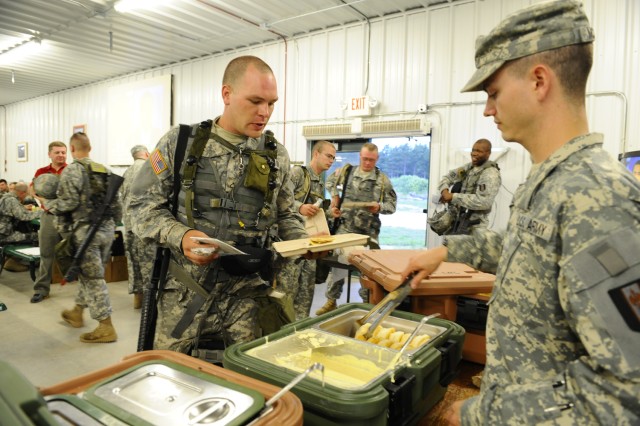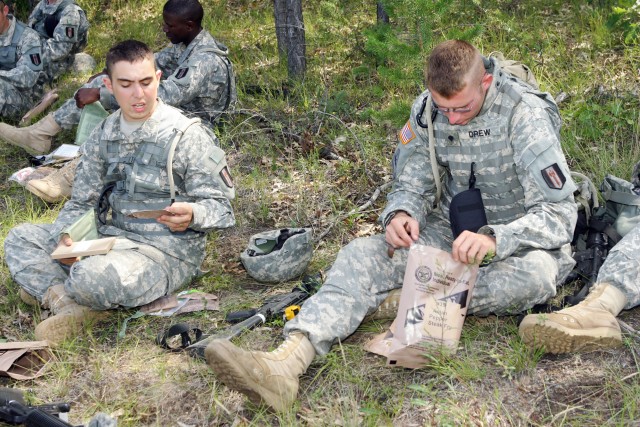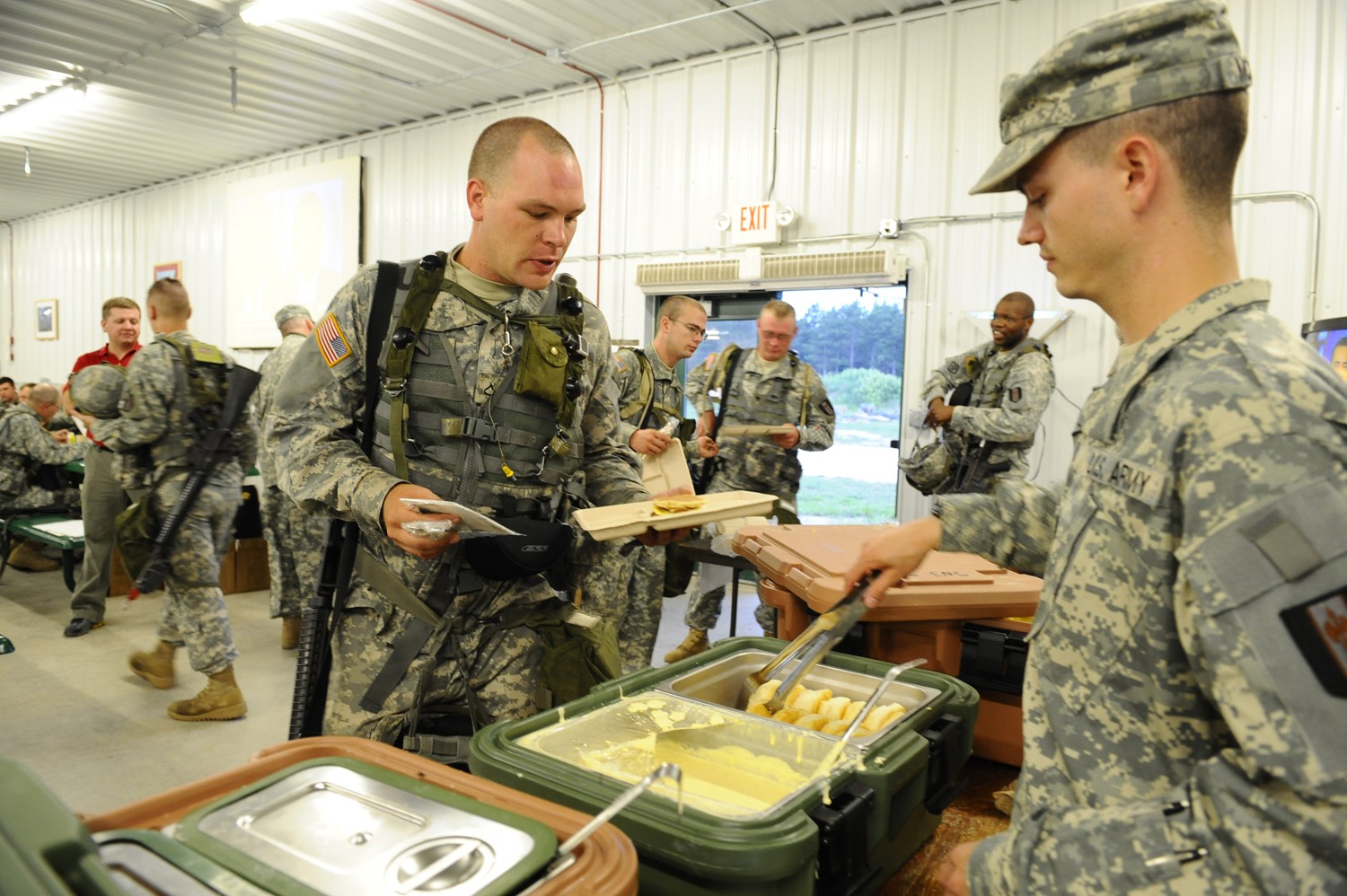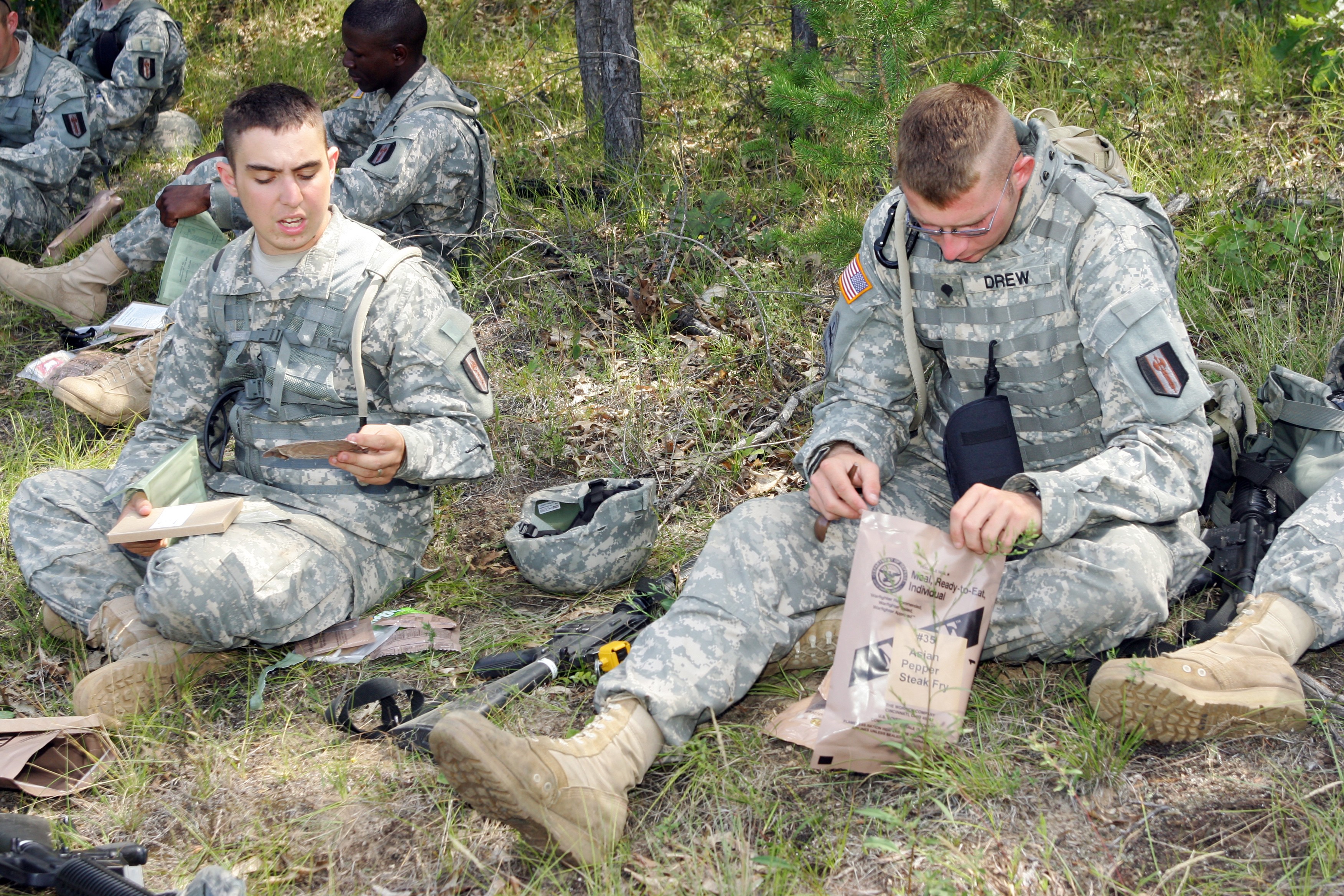Soldiers participated in a food-tasting test during their training at Fort McCoy, Wis., to help the Department of the Defense decide its future rations menu.
Personnel from the U.S. Army Natick, Mass., Soldier Systems Center, DoD Combat Feeding Directorate, conducted the testing at Fort McCoy in mid-August.
Soldiers were given the opportunity to rate food served for breakfast, lunch and dinner, said Mark Sharp.
Sharp is an equipment specialist for the Operational Forces Interface Group of the Natick Soldier Research, Development and Engineering Center.
The center has the mission to protect and sustain America's military forces, including the technology, research, development, engineering, fielding and sustainment of the military's food, clothing, shelters, air drop systems and Soldier support items.
"We use the most current menus versus test menus to have the Soldiers rate the food," Sharp said. "For MREs (meals, ready-to-eat), for example, we use the current 24 MREs plus several test ones. Soldiers help us determine the new items by rating the MREs. The ratings are averaged out among the Soldiers."
About 400 Soldiers assigned to the 368th Engineer Battalion, an Army Reserve unit from Londonderry, N.H., served as the test group for tasting one week of breakfast, lunch and dinner meals, including hot meals, from the new menu choices.
Sharp said the unit was chosen because the commander agreed to have his group serve as food testers. Units aligned to the 368th were at Fort McCoy participating in the Patriot Warrior 2009 exercise.
Lt. Col. Steve Grady, the 368th commander, said he volunteered his battalion units for the test because it was a chance to help improve the menu selection.
"This gives us a chance to help get better food for the people who will be downrange," Grady said. "Including this food service in our training helps it play out like a real-life (scenario)."
Command Sgt. Maj. Karen Speckman of the 368th said Soldiers from the unit attacked the food service survey with the same enthusiasm they had for their other training missions.
"The Soldiers work long hours and getting good food helps them complete their missions," she said.
Susan Harrington said the testing is done on an annual basis at an Army installation. Harrington is the project manager of the Fielded Group Rations Improvement Project and works for the Group Rations Team, DoD Combat Feeding Directorate.
The new food items included in the testing all are tested in-house to ensure quality products are used.
"This is the first time we've done the test in the Midwest region," Harrington said. "It's also the first time we've done it with Army reservists, which is good because reservists have been deployed and have experience (from that standpoint) with food rations."
Sharp said Natick asks the Soldiers to have an open mind when they taste the food and give honest feedback.
He noted the procedure includes collecting the data, tabulating the results, and deciding what foods received the highest ratings from the Soldiers.
The recommendations from the Soldiers dictate what rations will end up in the Army's inventory. The MRE rations tested will help decide what will be available to Soldiers in fiscal year 2012.
"The Soldiers were very upfront and brutally honest about the food," Sharp said. "They're really good. That's exactly what we want from them."
Cpl. Richard Nielsen of the 338th Engineer Company, which is aligned with the 368th, said he believed the new MRE choices were better than the old ones.
"The food was really bland during the last training we had," Nielsen said "I think they added spices, barbecue sauce and butter, which makes it taste better."
Spc. Matthew Morrill of the 338th said the test MREs also included lemon shortbread cookies.
"Last night was the best food we had," Morrill said. "Some things have been good and some things not. The eggs were definitely bad."
Pfc. Michael Darling of the 338th said the new MREs tasted better and many of the food items in them "looked and tasted like real food."
Sgt. Christine Prescott, the head cook for the 338th, said the cooks had seen or were familiar with many, if not most, of the new food items in civilian life, and knew how to cook them.
"This was great to have the opportunity to experience new rations," she said "The troops really seem appreciative of the new items, and are happy it's not just the same old stuff. They were told in advance this was going to happen, which also helped."




Social Sharing